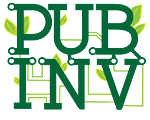Authored by: Miriam Castillo and Megan Cadena
Public Invention is a non-profit organization located in Austin, Texas, USA. It was formed in 2016 through the vision and philosophy of Robert L. Read (PhD) who is the founder and leader of invention projects.
Why is there a Public Invention? Born from a child whose books, comics and films put the idea of wanting to be a great inventor into his head and inspired him to attract other friends where together they will form a league of inventors who would work on solving big and important problems that would prevent him from feeling too lonely.
What can we do to prevent these children from feeling alone or “rare” in society rather than seeing their peculiarity as something special? Create an environment where we let them dare to fail, be disruptive, creative and innovative, by learning how to weld circuits, electricity, electronics, microprocessors, build with 3D printers and publish their ideas.
Public Invention makes a difference by inventing things for humanitarian purposes that help all people. Training inventors, technologists and students to find a PIHE space where they collaborate and conceptualize their ideas in inventions through team building, job selection, learning events, joint work and, in some cases, material support.
At public Invention, we believe that the public inventor of the future is a person who is part of a community that embraces the interdisciplinary talents that combine to shape the future: inventiveness, design, writing, art, photography, engineering, administration, fundraising. All our work is in the service of promoting humanitarian invention.
We want to make a better future for all. We eliminate legal barriers through the free use of our inventions; instead all work done with Public Invention is free and open to all under shared public licenses.
Importance Behind Forming A PHIE Club?
- Be an engineer that creates solutions in the public for the public
Who will Participate?
- Engineering Students who desire to serve a team and a demographic of people in need. Someone with a philanthropic, humanitarian mindset, a troubleshooter, and a problem solver.
Time Requirement (When)
- Side project for any professor or student to take up alongside their studies every week
Where is this taking place?
- Hybrid (VR & in person)
Why Join a PHIE Club?
- Be an engineer that creates solutions in the public for the public
How to establish a PHIE Club
Phase I. Initial Formation of Club
- Find like minded mentors/professors to collaborate with to form this club
- Go about logistics/documentation to register this club **Discuss further: does the university provide a zoom account for student email domains?
- Advertise Club with Media/Spread Awareness **Post flyers/market to business/marketing majors as volunteer opportunities
- Network with career professionals to grow club **Review Resumes
Phase II. How to Run an Existing Club
- Conceptualize project ideas into a real, tangible design **Ex. Hardware/Software/Firmware/Prototypes
Types of Projects Available
Computational/Software Projects
Ex.1 Geotagtext (GitHub Link)
Summary: This project made a web-based application to allow a group of people, perhaps in an emergency situation, to geotag locations to be on a map
Concept: Application Link
Published Article on Project: Link!
Electrical Hardware/Mechanical Design Projects
Ex.1 The Ox Project (GitHub Link)
Summary: To create a scalable, open source oxygen concentrator for medical therapies in rugged environments.
Skills Needed:
Volunteers are needed for this project! Please contact Public Invention if you are interested in joining. Currently we are looking for electrical, mechanical, and software engineers.
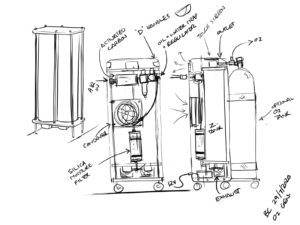
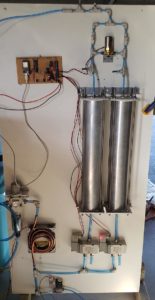
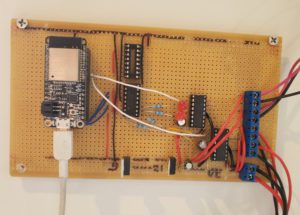
Ex.2 A Passive Ferrofluid Check Valve (GitHub Link)
Summary: This project attempts a design of a passive ferrofluid one-way valve prototype. This invention is novel and important for making it easier to fabricate lab-on-a-chip applications because it has no moving parts and is completely passive.
Video: Link
Design/Concept Images:
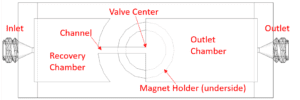
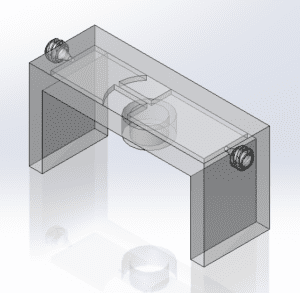
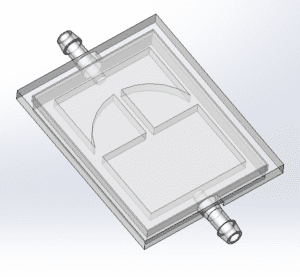
Ex.3 The Moonrat Project (GitHub Link)
Summary: To build a small, portable, intelligent incubator that can maintain constant elevated temperature; this will allow a variety of biological experiments and assays to be performed “in the field” without having access to an electric grid for power.
Skills Needed:
- 3D design software
- Arduino programming
- Electro-mechanical design
- OpenSCAD programming
Current Design Draft:
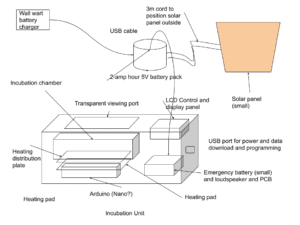
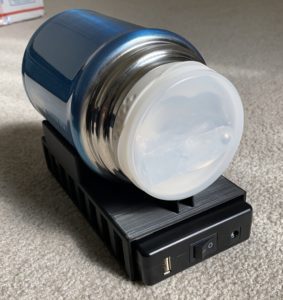
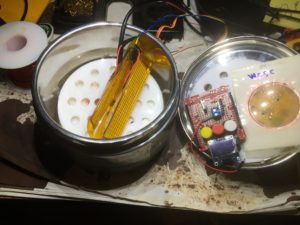
Math Projects
Ex.1 SoftRobotMath (GitHub Link)
Summary: This project attempts to develop the mathematical basis for moving a soft robotics platform based on spherical inflated components. The platform design proven is similar to a “Stewart Platform.”
Images:
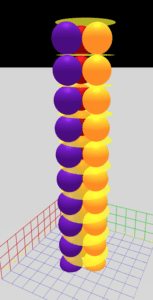
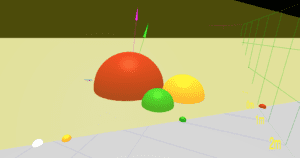
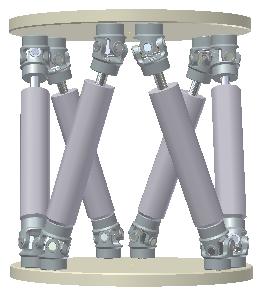
A live demo is available by pointing a JavaScript enabled browser here: https://pubinv.github.io/softrobotmath/
Biomedical/Health Projects
Ex.1 PolyVent Project (GitLab Link)
Summary: PolyVent is a medical ventilator design formula for global production scenarios, which aims to provide needed functionality, flexibility and adaptability based on the regional production and supply chain capabilities. This project team essentially developed different hardware components for a medical ventilator design in order to make supply chain accessibility universal for any user in any country.
Videos: PolyVent design demonstration & Brief Introduction Video
Images:
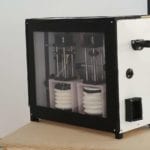
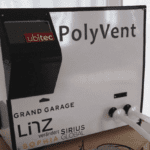
Other Specific Projects
Ex.1 The Sunlight Regulatory Device License (GitHub Link)
Summary: An attempt to construct a new kind of free-libre open source license aimed specifically at medical devices.
Skills/Volunteers Needed:
- Lawyers or paralegals who work with copyright licensing for open-source medical device designs
